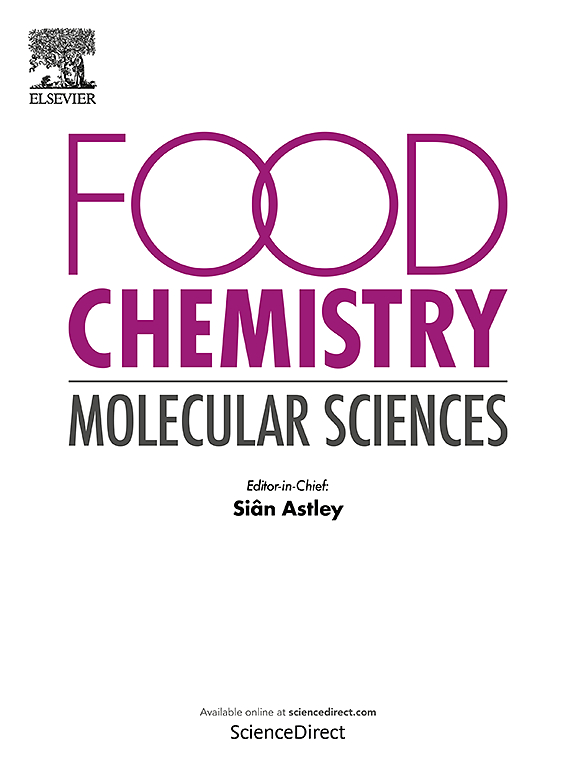A protocol for microRNA extraction from gastrointestinal digesta
IF 4.1
Q2 FOOD SCIENCE & TECHNOLOGY
引用次数: 0
Abstract
MicroRNAs (miRNAs) are non-coding RNAs that influence gene-expression via post-transcriptional regulation of target protein-coding RNAs. With literature reports indicating survival of diet-derived miRNAs following their ingestion, it is important to study their stability and concentration during gastrointestinal digestion. The unique combination of chemicals and elevated RNAse content present in the gastrointestinal matrix may be a limiting factor for studying diet-derived miRNAs. First, chemical cross-reactivity with matrix constituents (e.g. bile salts) may interfere with the salt bridge interactions typically present during RNA extraction, reducing the efficiency of the column. Second, high RNAse content may not be fully inhibited during extraction and could continue degrading the miRNAs, as is observed for other tissues with high RNAse content. These combined issues may result in a reduced efficiency in yield and purity of RNA extracts, further limiting the study of diet-derived miRNAs (i.e. in downstream metabolism). In the present manuscript, we display a method based on silica column purification to extract and quantify diet-derived miRNAs from the bioaccessible phase of the gastrointestinal digesta. The proposed protocol provides a simple, quick (less than 2 h), reliable, and systematic method for miRNA purification from gastrointestinal digesta. The optimization showcased that the challenges caused by high RNAse activity, plant bioactive substances and bile-salt content within the gastrointestinal digesta have been overcome and the study of the miRNA fraction in a body fluid so far neglected is now available to researchers, allowing the use of miRNA as biomarkers of intake and potentially biomarkers of biological changes.
一种从胃肠道食糜中提取微rna的方法
微RNA(miRNA)是一种非编码RNA,通过转录后调控靶蛋白编码RNA来影响基因表达。文献报道表明,饮食中的 miRNA 在摄入后仍能存活,因此研究它们在胃肠道消化过程中的稳定性和浓度非常重要。胃肠道基质中独特的化学物质组合和较高的 RNAse 含量可能是研究饮食衍生 miRNA 的一个限制因素。首先,与基质成分(如胆汁盐)的化学交叉反应可能会干扰 RNA 提取过程中通常存在的盐桥相互作用,从而降低色谱柱的效率。其次,在提取过程中,高 RNAse 含量可能不会被完全抑制,可能会继续降解 miRNA,正如在其他高 RNAse 含量的组织中观察到的情况一样。这些综合问题可能会导致 RNA 提取的产量和纯度降低,进一步限制对饮食衍生 miRNA(即下游代谢)的研究。在本手稿中,我们展示了一种基于硅胶柱纯化的方法,用于从胃肠消化液的生物可接受性阶段提取和定量膳食来源的 miRNA。所提出的方案为从胃肠消化液中纯化 miRNA 提供了一种简单、快速(少于 2 小时)、可靠和系统的方法。优化结果表明,胃肠消化液中的高 RNAse 活性、植物生物活性物质和胆盐含量所带来的挑战已被克服,研究人员现在可以对迄今为止被忽视的体液中的 miRNA 部分进行研究,从而将 miRNA 用作摄入量的生物标志物以及潜在的生物变化生物标志物。
本文章由计算机程序翻译,如有差异,请以英文原文为准。
求助全文
约1分钟内获得全文
求助全文
来源期刊

Food Chemistry Molecular Sciences
Agricultural and Biological Sciences-Food Science
CiteScore
6.00
自引率
0.00%
发文量
83
审稿时长
82 days
期刊介绍:
Food Chemistry: Molecular Sciences is one of three companion journals to the highly respected Food Chemistry.
Food Chemistry: Molecular Sciences is an open access journal publishing research advancing the theory and practice of molecular sciences of foods.
The types of articles considered are original research articles, analytical methods, comprehensive reviews and commentaries.
Topics include:
Molecular sciences relating to major and minor components of food (nutrients and bioactives) and their physiological, sensory, flavour, and microbiological aspects; data must be sufficient to demonstrate relevance to foods and as consumed by humans
Changes in molecular composition or structure in foods occurring or induced during growth, distribution and processing (industrial or domestic) or as a result of human metabolism
Quality, safety, authenticity and traceability of foods and packaging materials
Valorisation of food waste arising from processing and exploitation of by-products
Molecular sciences of additives, contaminants including agro-chemicals, together with their metabolism, food fate and benefit: risk to human health
Novel analytical and computational (bioinformatics) methods related to foods as consumed, nutrients and bioactives, sensory, metabolic fate, and origins of foods. Articles must be concerned with new or novel methods or novel uses and must be applied to real-world samples to demonstrate robustness. Those dealing with significant improvements to existing methods or foods and commodities from different regions, and re-use of existing data will be considered, provided authors can establish sufficient originality.
 求助内容:
求助内容: 应助结果提醒方式:
应助结果提醒方式:


